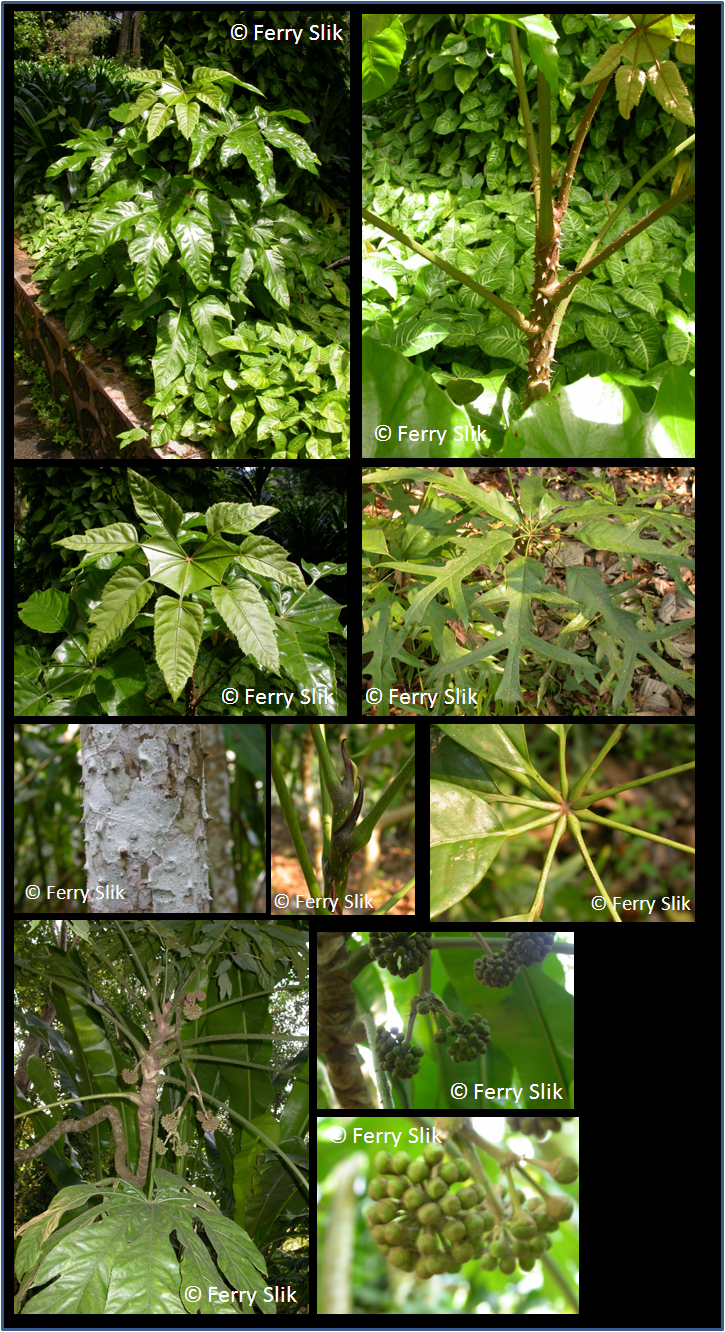Trevesia palmata (Roxb. ex Lindl.) Vis., Mem. Reale Accad. Sci. Torino Ser. II, iv. 262 (1842)
(Latin for 'hand shaped', referring to the leaves)Synonyms
Aralia dubia Spreng.
Brassaiopsis confluens Seem.
Brassaiopsis papayoides Hand.-Mazz.
Fatsia cavaleriei H. LÚv.
Gastonia palmata Roxb.
Gilibertia palmata (Roxburgh ex Lindley) Candolle
Hedera ferruginea Wall. [Invalid]
Hedera palmata (Roxb. ex Lindl.) Wall.
Plerandra jatrophifolia Hance
Plerandropsis bonii R. Vig.
Trevesia cavaleriei (H. LÚv.) Grushv. & Skvortsova
Trevesia longipedicellata Grushv. & Skvortsova
Trevesia longipedicellata var. palmatipartita Grushv. & Skvortsova
Trevesia palmata var. cheirantha C. B. Clarke, in Hook. f.
Trevesia palmata var. costata H. L. Li
Trevesia palmata var. incisa Boerl.
Trevesia palmata var. insignis C. B. Clarke in Hook. f.
Trevesia sanderi Danhart
Trevesia sphaerocarpa Grushv. & Skvortsova
Description
Trees, evergreen, to 8 m tall. Trunk to ca. 15 cm d.b.h.; branches prickly, farinose stellate pubescent. Leaves simple; petiole often
prickly, 30-70(-90) cm; stipules united into a 2-lobed sheath; blade large, 60-90 cm wide, leathery, both surfaces glabrous or with
scattered stellate hairs, lateral veins distinct on both surfaces, deeply 5-9-lobed; lobes narrowly ovate-lanceolate, margin serrate,
apex acuminate. Inflorescence a panicle of umbels, ca. 45 cm, densely farinose stellate pubescent when young, glabrescent; peduncles
4-17 cm; umbels 4-5 cm in diam., 25-45-flowered; pedicels 1.5-2 cm. Calyx rim 1-2 mm, farinose stellate pubescent. Stamens 7-12.
Ovary 7-12-carpellate. Fruit subglobose to compressed-globose, 1-1.8 cm in diam., smooth or ribbed; styles united, conic, 2-4 mm,
stout, persistent. [data taken from the Flora of China]
Ecology
In mixed forests on mountain slopes; 600-2000 m elevation. Forest understorey, often along streams or on wet places.
Distribution
From northern India, Nepal and Bangladesh to southern China, Vietnam, Laos, Burma, Thailand and Cambodia.
Uses
Ornamental plant. The shoots are edible. The plant is used to treat venereal diseases.
Local names
English: Snowflake Aralia.
